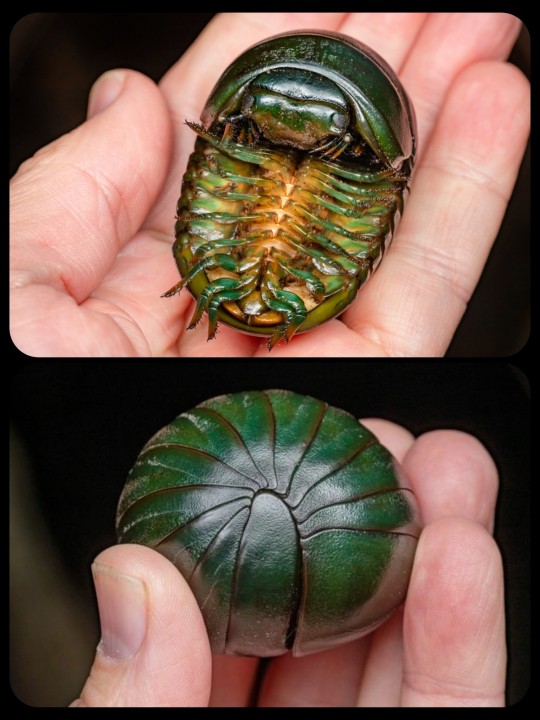#Defense Research and Development
Explore tagged Tumblr posts
Text
India DRDO opens centre for Quantum Technology to boost strategic applications capabilities
By A Correspondent New Delhi: India’s military technology agency, Defence Research and Development Organisation (DRDO), opened a Quantum Technology Research Centre (QTRC) on May 27, 2025, to boost the nation’s capabilities in strategic and defence applications of the emerging technology. DRDO Chairman and Department of Defence R&D Secretary Dr Samir V. Kamat inaugurated the facility at Metcalfe…
#Chairman#Computational Systems#Cyber Systems#Defence#Defence Ministry#Defence R&D#Defence Research and Development#Defence Research and Development Organisation#Defence Technology#Defense#Defense R&D#Defense Research and Development#Defense Technology#Department of Defence R&D#Department of Defence Research and Development#Director General#Dr Manu Korulla#Dr Samir V. Kamat#DRDO#Emerging Technologies#India#Indian#Metcalfe House#Micro Electronic Devices#Military Technology#Ministry of Defence#MoD#National Quantum Mission#QTRC#Quantum Technology
0 notes
Text
Toward a code-breaking quantum computer
New Post has been published on https://thedigitalinsider.com/toward-a-code-breaking-quantum-computer/
Toward a code-breaking quantum computer


The most recent email you sent was likely encrypted using a tried-and-true method that relies on the idea that even the fastest computer would be unable to efficiently break a gigantic number into factors.
Quantum computers, on the other hand, promise to rapidly crack complex cryptographic systems that a classical computer might never be able to unravel. This promise is based on a quantum factoring algorithm proposed in 1994 by Peter Shor, who is now a professor at MIT.
But while researchers have taken great strides in the last 30 years, scientists have yet to build a quantum computer powerful enough to run Shor’s algorithm.
As some researchers work to build larger quantum computers, others have been trying to improve Shor’s algorithm so it could run on a smaller quantum circuit. About a year ago, New York University computer scientist Oded Regev proposed a major theoretical improvement. His algorithm could run faster, but the circuit would require more memory.
Building off those results, MIT researchers have proposed a best-of-both-worlds approach that combines the speed of Regev’s algorithm with the memory-efficiency of Shor’s. This new algorithm is as fast as Regev’s, requires fewer quantum building blocks known as qubits, and has a higher tolerance to quantum noise, which could make it more feasible to implement in practice.
In the long run, this new algorithm could inform the development of novel encryption methods that can withstand the code-breaking power of quantum computers.
“If large-scale quantum computers ever get built, then factoring is toast and we have to find something else to use for cryptography. But how real is this threat? Can we make quantum factoring practical? Our work could potentially bring us one step closer to a practical implementation,” says Vinod Vaikuntanathan, the Ford Foundation Professor of Engineering, a member of the Computer Science and Artificial Intelligence Laboratory (CSAIL), and senior author of a paper describing the algorithm.
The paper’s lead author is Seyoon Ragavan, a graduate student in the MIT Department of Electrical Engineering and Computer Science. The research will be presented at the 2024 International Cryptology Conference.
Cracking cryptography
To securely transmit messages over the internet, service providers like email clients and messaging apps typically rely on RSA, an encryption scheme invented by MIT researchers Ron Rivest, Adi Shamir, and Leonard Adleman in the 1970s (hence the name “RSA”). The system is based on the idea that factoring a 2,048-bit integer (a number with 617 digits) is too hard for a computer to do in a reasonable amount of time.
That idea was flipped on its head in 1994 when Shor, then working at Bell Labs, introduced an algorithm which proved that a quantum computer could factor quickly enough to break RSA cryptography.
“That was a turning point. But in 1994, nobody knew how to build a large enough quantum computer. And we’re still pretty far from there. Some people wonder if they will ever be built,” says Vaikuntanathan.
It is estimated that a quantum computer would need about 20 million qubits to run Shor’s algorithm. Right now, the largest quantum computers have around 1,100 qubits.
A quantum computer performs computations using quantum circuits, just like a classical computer uses classical circuits. Each quantum circuit is composed of a series of operations known as quantum gates. These quantum gates utilize qubits, which are the smallest building blocks of a quantum computer, to perform calculations.
But quantum gates introduce noise, so having fewer gates would improve a machine’s performance. Researchers have been striving to enhance Shor’s algorithm so it could be run on a smaller circuit with fewer quantum gates.
That is precisely what Regev did with the circuit he proposed a year ago.
“That was big news because it was the first real improvement to Shor’s circuit from 1994,” Vaikuntanathan says.
The quantum circuit Shor proposed has a size proportional to the square of the number being factored. That means if one were to factor a 2,048-bit integer, the circuit would need millions of gates.
Regev’s circuit requires significantly fewer quantum gates, but it needs many more qubits to provide enough memory. This presents a new problem.
“In a sense, some types of qubits are like apples or oranges. If you keep them around, they decay over time. You want to minimize the number of qubits you need to keep around,” explains Vaikuntanathan.
He heard Regev speak about his results at a workshop last August. At the end of his talk, Regev posed a question: Could someone improve his circuit so it needs fewer qubits? Vaikuntanathan and Ragavan took up that question.
Quantum ping-pong
To factor a very large number, a quantum circuit would need to run many times, performing operations that involve computing powers, like 2 to the power of 100.
But computing such large powers is costly and difficult to perform on a quantum computer, since quantum computers can only perform reversible operations. Squaring a number is not a reversible operation, so each time a number is squared, more quantum memory must be added to compute the next square.
The MIT researchers found a clever way to compute exponents using a series of Fibonacci numbers that requires simple multiplication, which is reversible, rather than squaring. Their method needs just two quantum memory units to compute any exponent.
“It is kind of like a ping-pong game, where we start with a number and then bounce back and forth, multiplying between two quantum memory registers,” Vaikuntanathan adds.
They also tackled the challenge of error correction. The circuits proposed by Shor and Regev require every quantum operation to be correct for their algorithm to work, Vaikuntanathan says. But error-free quantum gates would be infeasible on a real machine.
They overcame this problem using a technique to filter out corrupt results and only process the right ones.
The end-result is a circuit that is significantly more memory-efficient. Plus, their error correction technique would make the algorithm more practical to deploy.
“The authors resolve the two most important bottlenecks in the earlier quantum factoring algorithm. Although still not immediately practical, their work brings quantum factoring algorithms closer to reality,” adds Regev.
In the future, the researchers hope to make their algorithm even more efficient and, someday, use it to test factoring on a real quantum circuit.
“The elephant-in-the-room question after this work is: Does it actually bring us closer to breaking RSA cryptography? That is not clear just yet; these improvements currently only kick in when the integers are much larger than 2,048 bits. Can we push this algorithm and make it more feasible than Shor’s even for 2,048-bit integers?” says Ragavan.
This work is funded by an Akamai Presidential Fellowship, the U.S. Defense Advanced Research Projects Agency, the National Science Foundation, the MIT-IBM Watson AI Lab, a Thornton Family Faculty Research Innovation Fellowship, and a Simons Investigator Award.
#2024#ai#akamai#algorithm#Algorithms#approach#apps#artificial#Artificial Intelligence#author#Building#challenge#classical#code#computer#Computer Science#Computer Science and Artificial Intelligence Laboratory (CSAIL)#Computer science and technology#computers#computing#conference#cryptography#cybersecurity#defense#Defense Advanced Research Projects Agency (DARPA)#development#efficiency#Electrical Engineering&Computer Science (eecs)#elephant#email
5 notes
·
View notes
Text
#Hypersonic Missile#India#DRDO (Defense Research and Development Organization)#Military Technology#Defense#National Security#Strategic Advantage#Missile Defense#Long-Range Missile#Test Launch#Military Power#Global Race
1 note
·
View note
Text
There is this pervasive very narrow concept a lot people have of what exercising/working out is and why people do it, that it is only about losing weight and "looking hot" which makes some people more defensive or hostile to the suggestion for one reason or another, like it is an attack against them and how they look. It isnt about that, it can be about that but more than that it is an act of self care. it is about feeling better. it is about making your body as capable of maintaining your life as you can. I understand it is more difficult to some than it is for others, every single person is different and has different circumstances but doing little things to get your body moving will make you feel better, theres many ways of exercising. It isnt just lifting weights and running on a treadmill and things that can seem intimidating or inaccessible. Theres a lot of different ways and with a little research theres something out there for everyone, I have never been a fan of working out but then i tried yoga watching some youtube guides in my bedroom and it made me feel a lot better, mentally and physically. Thats all i got to say ♥️
#this is a little hypocritical of me honestly#theres twitter leftist discourse going on that made me lose my mind#it upsets me as someone who worked for a independent living center as a program developer#and someone who did a lot of research into this kinda stuff#that some people would call the suggestion of exercising ableist#we had work out classes for people with disabilities#i looked into this stuff#i designed a self defense class for people with disabilities#theres the fuckin paralympics#and the special olympics#swimming is really fuckin good for you if you have arthritis too it makes your bones ache less i can attest
3 notes
·
View notes
Text
What is DRDO? History, Projects, Labs, Achievements Details
Explore everything about DRDO – India’s Defence Research and Development Organisation. Learn its history, major projects, labs, key scientists, achievements, and how it strengthens national defense in simple words. DRDO: Defence Research and Development Organisation The Defence Research and Development Organisation (DRDO) is India’s premier agency for military research and development. It works…
#Defence Research and Development Organisation#DRDO#DRDO 2025#DRDO achievements#DRDO aircraft#DRDO easy explanation#DRDO engine#DRDO for students#DRDO full form#DRDO headquarters#DRDO history#DRDO labs#DRDO missiles#DRDO projects#DRDO scientists#Indian defense technology
0 notes
Text
youtube
#youtube#Defense Officials Testify About Military Construction Innovation#donald trump#Hyliion#defense infrastructure#House Appropriations Committee#research and development#Army Corps of Engineers#energy efficiency#government hearings#defense technology#defense officials#military strategy#infrastructure development#military technology#congressional testimony
0 notes
Text

New Republic Department of Research and Development Foreign Intruder Defense Organism (FIDO)
Source: The Essential Guide to Droids (Del Rey, 1999)
#star wars#droids#new republic droids#new republic department of research and development#foreign intruder defense organism#fido#security droids#new republic era#first appearance champions of the force#essential guide to droids#essential guides#admiral ackbar#new republic
0 notes
Text
The Hungarian Presidency: A New Era for Europe
Read the opinion article on the Hungarian presidency by MEP Daniel Freund (Greens/EFA) here. As events unfold around Hungary’s rotating EU presidency, a notable shift in European dynamics is becoming increasingly evident. Recent gatherings of European leaders in Budapest marked a significant moment in diplomatic history, culminating in the adoption of the “Budapest Declaration.” This declaration…
#Budapest Declaration#defense capabilities#economic security#energy costs#EU leadership#European competitiveness#global dynamics#Hungarian presidency#political cooperation#research and development#US elections
0 notes
Text
AIRBORNE: Platform Utama Penyelidikan dan Pengembangan Seni Mempertahankan Diri di Peringkat Global
AIRBORNE, atau Martial Arts and Combat Sports Research Network, di bawah Fakulti Sains Sukan dan Rekreasi (FSR) UiTM, ditubuhkan secara rasmi pada 5 Julai 2022. Ia berfungsi sebagai platform utama dalam penyelidikan dan aktiviti berkaitan seni mempertahankan diri serta sukan tempur di peringkat nasional dan antarabangsa. Matlamat utamanya adalah untuk mengumpulkan akademik, penyelidik, dan pakar…
#AIKIDO#combat sports#combat sports studies#Cultural heritage#global combat sports#Global Martial Arts#IMACSSS 2024#international martial arts event#martial arts anthropology#martial arts biomechanics#martial arts community#martial arts conference#martial arts culture#martial arts development#Martial Arts Education#martial arts exhibitions#martial arts history#martial arts injuries#martial arts innovation#martial arts networking#martial arts nutrition#martial arts physiology#martial arts research#martial arts technology#Martial Arts Training#Martial Arts Workshops#modern combat sports#muay thai#pencak silat#self-defense research
0 notes
Text
Giant Emerald Pill-Millipede: when these enormous millipedes are all rolled up, their bodies can be as big as a baseball, a tennis ball, or a small orange

This species (Zoosphaerium neptunus) is commonly known as a giant emerald pill-millipede. The females can measure up to 90mm long (roughly 3.5 inches), making this the largest species of pill-millipede in the world.

There is a significant degree of sexual dimorphism in this species, with the males measuring only about 45mm (1.8 inches) long -- roughly half the size of the females.
Giant emerald pill-millipedes are found only in Madagascar, which is home to several endemic species of giant pill-millipedes (order Sphaerotheriida). The Malagasy name for giant pill-millipedes is "Tainkintana," which means "shooting-star."

Pill-millipedes use conglobation as a defense mechanism, which means that they can curl their bodies up into a spherical shape so that their dorsal plates form a protective shield around the softer, more vulnerable parts of their bodies, just like an actual pill-bug or a "roly-poly."
When they roll themselves up completely, they look almost like gently polished chunks of malachite, emerald, or jade.

Giant emerald pill-millipedes will sometimes form large swarms that travel together as a group. This is the only species of giant pill-millipede that engages in any sort of swarming behavior, and the purpose of that behavior is still unclear. The swarms often contain thousands of individuals, with almost all of them moving in the same direction, even when there is no physical contact that might allow the millipedes to "herd" one another along.

Their swarming behavior also has some very peculiar features, as this article explains:
During swarming, Zoosphaerium neptunus individuals pay little attention to their surroundings; many specimens were observed walking straight into and drowning in small puddles. Some swarms even display ‘cliché lemming behaviour:' in Marojejy, a large part of a swarm walked into and drowned in a small river.
No single specimen was observed walking ‘against the current,' all specimens were moving in the same direction (southeast), even when not in contact with one another.
Of 273 randomly collected individuals, 105 were males, while 168 were females. The males were 8.3 - 14.1 mm wide (average width 10.4 mm). According to the inner horns of the posterior telopods, all males were sexually mature. The females were 9.95 - 15.4 mm wide (average width 11.4 mm). All females displayed non sclerotized vulvae and were sexually immature.
Some researchers argue that the swarming serves as a defense mechanism, providing a layer of protection (or at least some cryptic cover) against local predators, but the swarming behavior is still poorly understood.

Important Note: I just want to remind everyone that these animals belong in their own natural habitat -- they should not be trapped, bought/sold, traded, shipped, collected, or kept as pets. This particular species does not survive well in captivity, either, and the demand for these "exotic" invertebrates is putting the wild populations in jeopardy. The previous article discusses those issues, too:
Another possible threat for Z. neptunus swarms are collections for the pet trade. There exists a large demand in Japan, Europe and North America for 'green -eyed monsters’ as pets. Giant pill -millipedes from Madagascar unfortunately have a very short survival time in terraria. The species is specialized on low-energy food (dead leaves), and adapted to the cool climates (<20°C) of the highlands. Specimens in terraria often starve to death quickly.
So I know that they're adorable and really, really fascinating...but let's just let them be their chunky, adorable little selves out in the wild where they belong.
Sources & More Info:
European Journal of Taxonomy: Seven New Giant Pill-Millipede Species and New Records of the Genus Zoosphaerium from Madagascar
Madagascar Conservation & Development: Swarming Behavior in the World's Largest Giant Pill-Millipede, Z. neptunus, and its Implication for Conservation Efforts
Bonn Zoological Bulletin Supplementum: The Giant Millipedes, Order Sphaerotheriida (an Annotated Species Catalogue) (PDF)
African Invertebrates: Madagascar's Living Giants: Discovery of Five New Species of Endemic Giant Pill-Millipedes from Madagascar (PDF)
#arthropods#giant green pill-millipede#zoosphaerium neptunus#myriapods#diplopoda#millipedes#island gigantism#entomology#evolution#malagasy#cool animals#bugs#insects#animal facts#madagascar#pill-millipede#pill bugs#but not really#Tainkintana#conglobation#swarming#conservation#giant emerald pill-millipede
10K notes
·
View notes
Text
Trump confirms American F-35 contest with Russian Su-57 for India 5th Gen combat jet deal
By N. C. Bipindra New Delhi: It is official now. US President Donald Trump has effectively set up a contest between American F-35 and Russian Su-57 for India‘s big-ticket need for a fifth-generation fighter aircraft to catch up with arch-rival China on high-end combat jets. Trump, after meeting Indian Prime Minister Narendra Modi in Washington, D.C., announced that the US is offering India the…
#ADA#Advance Medium Combat Aircraft#AeroIndia#Aeronautical Development Agency#Aerospace#Air Force#aircraft carrier#AMCA#Andurill Industries#Anti-Tank Guided Missile#Army#Asia#Autonomous Systems#Autonomous Systems Industry Alliance#BEL#Bharat Electronics#Boeing Co.#CCS#China#Combat Jet#Defence#Defence Research and Development Organisation#Defense#Donald Trump#DRDO#Emmanuel Macron#F-16#F-21#F-35#Fifth Generation Fighter Aircraft
2 notes
·
View notes
Text
Lightweight BPJ for Enhanced Soldier Safety
Lightweight BPJ for Enhanced Soldier Safety @neosciencehub #neosciencehub #science #research #IITDelhi #technology #innovation #bulletproof #BPJ #RnD #defence #MilitaryGear #Soldier #Mobility #ArmorDevelopment #BallisticProtectionTechnology #safety #
IIT Delhi Develops Advanced Jackets At the IInvenTive 2024 R&D fair, the Indian Institute of Technology Delhi unveiled a groundbreaking advancement in defense technology: a new design for a lightweight bulletproof jacket (BPJ). The innovation, spearheaded by NareshBhatnagar, HemantChouhan, and Khushi Ram, represents a significant leap forward in ensuring the safety and agility of security…

View On WordPress
#Bulletproof Technology#Defense Innovations#featured#Military Gear Advancements#Personal Body Armor Development#research#sciencenews#Soldier Mobility Enhancement
0 notes
Text
DRDO కొత్త తరం ఆకాశ్ క్షిపణి పరీక్షను విజయవంతంగా నిర్వహించింది

భారత్కు చెందిన రక్షణ పరిశోధన అభివృద్ధి సంస్థ -DRDO కొత్త తరం ఆకాశ్ క్షిపణి పరీక్షను విజయవంతంగా నిర్వహించింది. ఒడిశా తీరంలోని చండీపూర్లోగల ఇంటిగ్రేటెడ్ టెస్ట్ రేంజ్ నుంచి గగనతలంలో డీఆర్డీవో ఈ ప్రయోగాన్ని నిర్వహించింది.

Read the full article
#akashmissile#defense#development#drdo#generation#missile#national#new#organization#research#successfully#test#ఆకాశ్#కొత్త#క్షిపణి#తరం#నిర్వహించింది#పరీక్షను#విజయవంతంగా
0 notes
Text
"Morningside Park, a beloved neighborhood park in Miami with sweeping views of Biscayne Bay, will soon pilot an innovative approach to coastal resilience.
BIOCAP tiles, a 3D-printed modular system designed to support marine life and reduce wave impact along urban seawalls, will be installed on the existing seawall there in spring 2025. BIOCAP stands for Biodiversity Improvement by Optimizing Coastal Adaptation and Performance.
Developed by our team of architects and marine biologists at Florida International University, the uniquely textured prototype tiles are designed to test a new approach for helping cities such as Miami adapt to rising sea levels while simultaneously restoring ecological balance along their shorelines...
Ecological costs of traditional seawalls
Seawalls have long served as a primary defense against coastal erosion and storm surges. Typically constructed of concrete and ranging from 6 to 10 feet in height, they are built along shorelines to block waves from eroding the land and flooding nearby urban areas.
However, they often come at an ecological cost. Seawalls disrupt natural shoreline dynamics and can wipe out the complex habitat zones that marine life relies on.
Marine organisms are crucial in maintaining coastal water quality by filtering excess nutrients, pollutants and suspended particles. A single adult oyster can filter 20-50 gallons of water daily, removing nitrogen, phosphorus and solids that would otherwise fuel harmful algal blooms. These blooms deplete oxygen levels and damage marine ecosystems.
Filter-feeding organisms also reduce turbidity, which is the cloudiness of water caused by suspended sediment and particles. Less water turbidity means more light can penetrate, which benefits seagrasses that require sunlight for photosynthesis. These seagrasses convert carbon dioxide into oxygen and energy-rich sugars while providing essential food and habitat for diverse marine species.
Swirling shapes, shaded grooves

Unlike the flat, lifeless surfaces of typical concrete seawalls, each BIOCAP tile is designed with shaded grooves, crevices and small, water-holding pockets. These textured features mimic natural shoreline conditions and create tiny homes for barnacles, oysters, sponges and other marine organisms that filter and improve water quality.
The tile’s swirling surface patterns increase the overall surface area, offering more space for colonization. The shaded recesses are intended to help regulate temperature by providing cooler, more stable microenvironments. This thermal buffering can support marine life in the face of rising water temperatures and more frequent heat events driven by climate change.
Another potential benefit of the tiles is reducing the impact of waves.
When waves hit a natural shoreline, their energy is gradually absorbed by irregular surfaces, tide pools and vegetation. In contrast, when waves strike vertical concrete seawalls, the energy is reflected back into the water rather than absorbed. This wave reflection – the bouncing back of wave energy – can amplify wave action, increase erosion at the base of the wall and create more hazardous conditions during storms.
The textured surfaces of the BIOCAP tiles are designed to help diffuse wave energy by mimicking the natural dissipation found on undisturbed shorelines.
The design of BIOCAP takes cues from nature. The tile shapes are based on how water interacts with different surfaces at high tide and low tide. Concave tiles, which curve inward, and convex tiles, which curve outward, are installed at different levels along the seawall. The goal is to deflect waves away from the seawall, reduce direct impact and help minimize erosion and turbulence around the wall’s foundation.A
How we will measure success
After the BIOCAP tiles are installed, we plan to assess how the seawall redesign enhances biodiversity, improves water quality and reduces wave energy. This two-year pilot phase will help assess the long-term value of ecologically designed infrastructure.
To evaluate biodiversity, we will use underwater cameras to capture time-lapse imagery of the marine life that colonizes the tile surfaces. These observations will aid in documenting species diversity and habitat use over time...
In the coming year, we’ll be watching with hope as the new BIOCAP tiles begin to welcome marine life, offering a glimpse into how nature might reclaim and thrive along our urban shorelines.
#ocean#seawall#florida#miami#climate adaptation#coastline#united states#north america#biodiversity#waves#ocean waves#good news#hope
1K notes
·
View notes
Text
5G Technology in Defense Market

#5G Technology in Defense Market#future development & forecast 2023-2032#global research market report#future development & forecast#global market report
0 notes
Text
@muffinlance I see your Zuko gets adopted by old sweepy and propose to you Zuko gets adopted by a random scholar at the Ba Sing Se University.
Look in Yuka's defense she has a lot of siblings, and Zuko at a quick glance could pass as her youngest brother. Yes, he should be at home still nowhere near Ba Sing Se, but her siblings end up in the strangest of places so she wouldn't put it past him to show up randomly. Doesn't help she already wears thick lens glasses, and her eyesight is just getting worse from all the reading in the dark she does. Also, she was deep in her research for the paper, and the kid she mistook as her brother was really useful at finding her just what she needed for her paper. He was also apparently an expert on Avatar research, able to spout off all kinds of facts and quotes where he got that research from. By the time she realizes this kid isn't her little brother, she's decided to adopt him anyway, and she will absolutely fight the Di Lee for him. He is her new research partner, and she'll list him as one of her sources if she has to. Then they can't take him as he is an integral part of the development of the culture of Ba Sing Se. Besides, the kid sucks at hiding the fact that he is a fire bender and needs someone to take him under their wing. Half her family are firebenders anyway. She may be small and mousy, but she can be mighty when it comes to her research. She is totally willing to throw hands with the Di Lee if it comes down to it.
Zuko isn't sure what to make of the small mousy scholar he accidentally stumbled upon while trying to find more research on the Avatar. Nor is he sure how he became her research assistant. All he knows is she started calling him Koji and talking to him like she knew him or rather knew this Koji and handing him scrolls to put away and requesting more works on the Avatar some he hadn't read before as Ba Sing Se was the one place he hadn't been able to break into until now. Then he starts spouting off his Avatar knowledge between what he knows of the current Avatar and what he read in old books and scrolls she just jots down what he said without ever once looking up at him. By the time she realizes he isn't this Koji person, she has apparently decided she is keeping him. She escorts him home or to the tea shop when she is done picking his brain for the day or treats him to good food and makes sure he gets enough to not only fill his belly but also to bring home to Uncle. When he gets fired from the tea shop for fighting Jet, she hires him permanently. She even argues that Jet is clearly delusional and needs help not to be carted off by the Culural Police. He is clearly scared so badly he can't see he is safe and that there is no war in Ba Sing Se. So Jet gets an involuntary stay in one of Ba Sing Se's finest mental hospitals with his own personal Joo Dee to look after him. It's around this time that Uncle realizes he may have to fight this young lady for custody of his nephew. At least he is staying out of trouble and expanding his intellectual knowledge.
#Zuko is a Avatar Expert#Zuko is integral to the culture if Ba Sing Se according to Yuka#Yuka refuses to give up her new assistant#Yuka may be shy but she will absolutely throw hands with the Di Lee if they try to take Zuko#Uncle is beginning to realize that Zuko’s new job may not be a good thing if it means he has to fight for custody#Its all fun and games until Yuka's actual younger siblings arrive for a visit and become fast friends with Zuko#Ba Sing Se may not survive the chaos they make#At least they free Appa in all the destruction they leave in their wake#they almost keep Appa but Yuka makes them return him after she studies him quickly#atla zuko#atla#Zuko gets adopted#avatar: tla#avatar the last airbender
525 notes
·
View notes